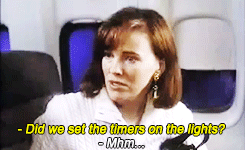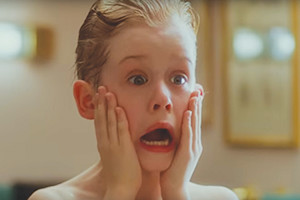The movie Home Alone is a holiday classic. Who doesn’t love watching Kevin McCallister outwit the bandits trying to break into his house? The movie, though, is the best-case scenario of what can happen if you accidently leave your child home alone.
Chances are, you won’t forget your child at home this holiday season. But there are some real-life home safety lessons to be learned from Home Alone and the adorable Kevin.
Read on to find out how you can protect your children during the holiday season, and beyond.
1. Practice shelf safety
Early on in Home Alone, we watch Kevin climb a rickety toy shelf, only to have it break and come tumbling down on top of him. It’s a movie, so Kevin was fine. In real life, the outcome might not be the same.
Each day, more than 40 children visit the emergency room for injuries sustained from furniture tip-overs, according to the Child Injury Prevention Alliance. Desks, cabinets, and bookshelves are the biggest culprits for tipping over, injuring the most kids from ages 10 to 17, the alliance notes.
How should you prevent injuries from furniture tip-overs?
- Put heavy items on the lower shelves of bookcases or entertainment centers. That way, objects don’t fall from high up and land on your child.
- Don’t put items of interest—toys, the remote control—on high shelves, or on top of the television. Kids may try to climb to reach the items, and could fall or otherwise injure themselves.
- Anchor shelves to the wall to prevent them from falling over onto your child.
2. Put glass ornaments out of reach
In Home Alone, a bandit who climbs in a downstairs window barefoot steps onto broken glass ornaments left by Kevin. Ouch! Glass ornaments, while beautiful, can easily shatter and cause injury.

A study done on injuries caused by ornaments found that glass ornaments can be a danger during the holiday season.
- Placing glass ornaments where little ones can reach them is an accident waiting to happen. If you have toddlers or small children, keep the glass ornaments in the attic until the kids are older.
- If you do have glass ornaments you must display, do so well out of reach of the children, and instruct kids that the ornaments are not to be touched.
3. Pick up your toys
It’s funny when Kevin uses small toys to hurt the bad guys who step or fall on them, but it’s not as funny when it happens to you.
- Instruct kids to pick up their toys routinely, so they won’t be stepped on or tripped over.
- If your child gets a new toy or game, find a “home” for it in the playroom or your child’s room. If every toy has a proper place, toys won’t end up underfoot as much.
Want to keep the bad guys out of your home this season, without leaving toys out for them to step on? Read the top 10 holiday burglary prevention tips.
4. Make it look like someone is home
If you’re headed out of town this holiday season, don’t advertise that fact. Kevin goes to great lengths in Home Alone to make it look like his family is home when in fact they are not.

While you don’t have to stage a fake party with cardboard cutouts and a mannequin, you should follow some home safety tips when you’re going on vacation.
- Place timers on different lights throughout your house, and program them to come on at different times.
- Have your mail held, or have a trusted neighbor collect it for you, while you’re gone. If you’re expecting any packages or deliveries, also have a friend or neighbor pick them up for you.
- Don’t brag about your trip on social media—you never know who could take advantage of learning you’re away.
5. Teach your children about calling 911
It’s never too early for children to learn how—and when—to call 911. Kevin calls 911 once the bandits get into his house. (He should have called when he realized he was home alone while his family was on their way to Paris, but that wouldn’t have made for an interesting movie.)
Here are some things your child should know about calling 911:
- Teach them young. Children age four and up should learn how and why to call 911, and what happens when they do.
- Tell your kids why they should call 911 (a medical emergency, a fire) and why them shouldn’t (they lost their toy or got a scrape on their arm). Go over with them what is an emergency, and what isn’t.
- Role-play calling 911. Have your child find the phone to call (but practice dialing on a fake phone or have them pretend to push the buttons on a real phone). Teach your child how to respond to the operator’s questions, and not to hang up until the operator says to.
- If you have older kids, inform them that 911 calls are traced and they will be punished if they make prank 911 calls.
Now that you’ve learned these home safety tips, have a safe a fun holiday season. And don’t forget to get in the holiday spirit by watching Home Alone with your kids!
Looking for more ways to make sure your kids stay safe, even when you’re not there? Read the five most effective ways to protect your kids.
And stay tuned for Part 2 from our “what we learned from watching Home Alone” series, when we share safety tips we learned from watching Kevin in Home Alone 2: Lost in New York.



